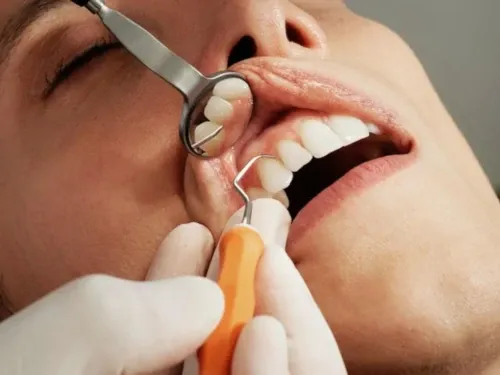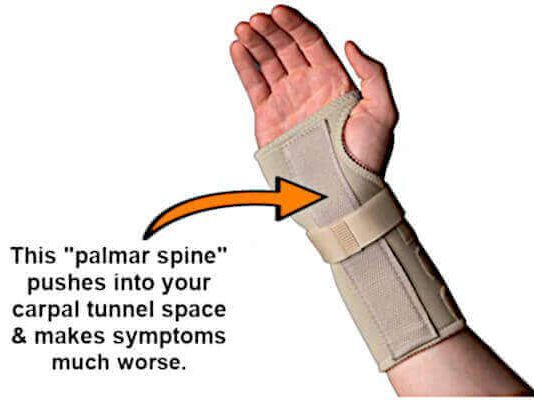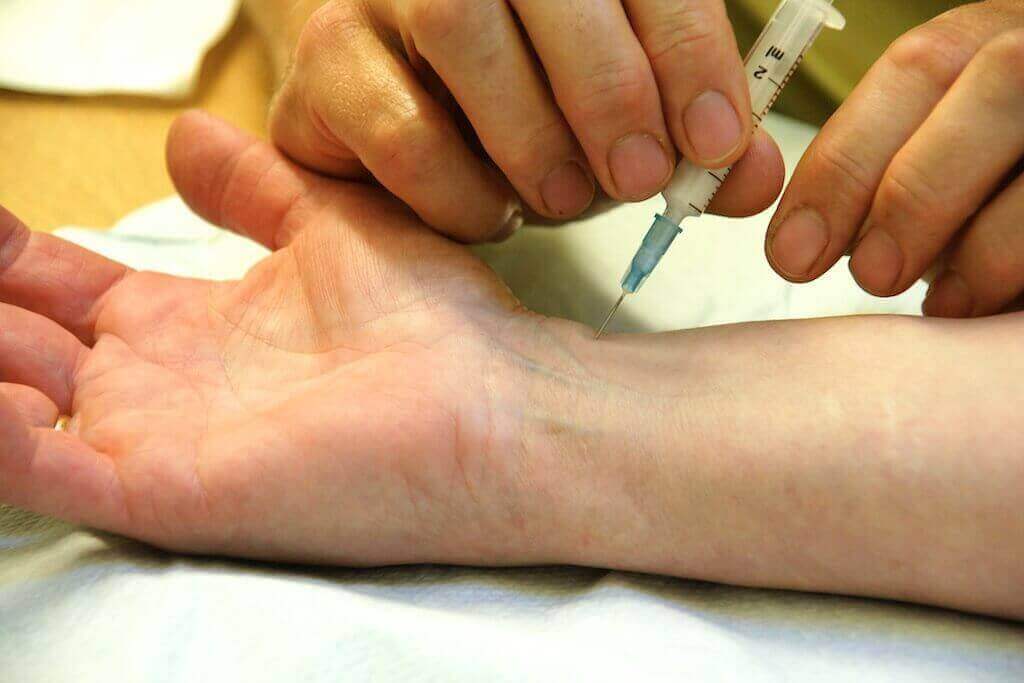How to Treat Carpal Tunnel Syndrome
Table of Contents
- Who gets carpal tunnel?
- Non-surgical treatments
1) Rest your fingers and hand
2) Avoid certain activities that aggravate your symptoms
3) Wear a wrist brace while sleeping
4) Stretching exercises to keep the nerve mobile
5) Myofascial massage of the wrist and forearm
6) Steroid injection into the carpal tunnel
7) Platelet rich plasma (PRP) injections
8) Hydrodissection of the median nerve
This article explains how to treat carpal tunnel syndrome. It focuses on non-surgical treatments since they are used to successfully treat over 97% of cases. In fact, doctors advise trying these conservative approaches first, before considering surgery.
Carpal tunnel syndrome is a common condition that causes pain, numbness, and tingling in the fingers, hand, and forearm. The condition occurs when one of the major nerves to the hand — the median nerve — is compressed as it travels through the wrist joint.
In most patients, carpal tunnel syndrome worsens over time. If untreated for too long, it can lead to permanent dysfunction of the hand. This means
loss of grip strength and sensation in the fingers. That's why it's important to
diagnose and treat carpal tunnel syndrome as soon as possible.
Early carpal tunnel
symptoms can often be relieved with simple measures like those described below. But moderate or
severe symptoms usually require a combination of these measures, which include:
- Rest your fingers and hand
- Avoid certain activities that aggravate your symptoms
- Wear a wrist brace while sleeping
- Stretching exercises to keep the nerve mobile
- Myofascial massage of the wrist and forearm
- Steroid injection into the carpal tunnel
- Platelet rich plasma (PRP) injections
- Hydrodissection of the median nerve
Who gets carpal tunnel?
The National Institutes of Health (NIH) says the
chances of getting carpal tunnel are directly related to particular
risk factors. Certain conditions and occupations are known for these risk factors, and include:
- Heredity
or family history. That means if a sibling or parent had it, then you're at high risk. Why? The carpal tunnel may be naturally smaller in some people. Or there may be anatomic differences that change the amount of space for the nerve. These traits can run in families.
- Repetitive, rapid and forceful hand movements. One of the more common risk factors for developing carpal tunnel is if you engage in
harmful hand activities. Repeating the same hand and wrist motions or activities over a prolonged period of time may aggravate the tendons in the wrist, causing swelling that puts pressure on the nerve. Occupations infamous for this are those using a keyboard and mouse,
dental hygienists,
guitar players,
hairdressers,
horse trainers,
artists,
graphic designers, farmers, and assembly line workers.
- Power tools or vibrating equipment. Vibration power tool use can definitely cause carpal tunnel syndrome. This
also might also lead to
vibration syndrome which is a completely different (and more serious) disorder than carpal tunnel syndrome.
- Hand and wrist position. Performing activities that involve extreme flexion or extension of the hand and wrist for a prolonged period of time can increase pressure on the nerve.
- Health conditions. Diabetes, rheumatoid arthritis, and thyroid gland imbalance are conditions associated with carpal tunnel syndrome.
Non-surgical treatments
The most commonly used non-surgical treatments are listed below. Mild forms of carpal tunnel syndrome often require just one of these treatments, usually for several weeks. But moderate or severe symptoms most often require two or more of these treatments applied simultaneously. And the more severe the symptoms, the longer the treatments will take to eliminate them.
1. Rest your fingers and hands
The age-old saying,
"rest cures all ills" also applies to carpal tunnel syndrome. In fact, it's one of the most effective ways to treat this disorder.
Activities involving holding, gripping, pinching, pushing, and rotating the hand or fingers (especially at high speed) will fatigue wrist tendons quickly. Therefore, as you work, take simple, short rest periods for your hands. It's usually sufficient to stop every 30 minutes for a 30 second "shake-out" of your hands. If you can also do stretching exercises (see below) during this time, you've maximized this rest period.
2. Avoid certain activities that aggravate your symptoms
Analyze how you work with your hands and identify the activity that’s most likely straining them. Then take measures to minimize stresses on your fingers and hands. For instance:
- If you work at a computer for more than six hours per day, you must break up the keyboarding time with regular rest periods.
- Pay attention to your wrists at the computer. The dangers of incorrect wrist positioning while sitting at a keyboard for long periods are very real. And look into using a special
carpal tunnel keyboard, a wrist-rest, and an ergonomic
mouse.
- If you use vibrating equipment, take measures to not hold the tool in a way that overly vibrates your hand. Also make sure you wear vibration-absorbing gloves.
- Some common and innocent-looking tools can produce huge negative forces inside your wrist joint. For instance, gripping a
hairbrush,
guitar fret or screwdriver in an odd or over-bent position can stress tendons enormously. Can you find ways to do the same job with less strain?
Keep in mind that constant gripping, pinching, grip-and-release, acute wrist bending, rapid finger movements, and vibration are the enemy. Try to avoid these harmful activities altogether. But if you cannot, then find ways to minimize them.
3. Wear a wrist brace while sleeping
When you sleep, you must ensure you rest your hand and wrist joint properly. That means wearing a
wrist brace (night brace) when you sleep. As we sleep, we unconsciously bend our hands forward and backward. That hyper-bending is very bad for the carpal tunnel space because it increases pressure inside. Wearing a carpal tunnel brace keeps your wrist in the "neutral position". That's the best and most restful position for the hand.
Key TIPS about bracing:
- Most wrist braces are NOT
certified carpal tunnel braces. "Certified" means they're approved by doctors for treating this condition. Wrist braces sold in pharmacies like CVS, Walmart, Walgreens, etc. are not certified carpal tunnel braces. (The package may say
"good for carpal tunnel" but it's not.) Here's how to tell: a
certified
carpal tunnel brace does
not
have a metal palmar spine. That spine will press into your carpal tunnel as you sleep.
- Never
wear a wrist brace during the daytime. Doing so will just cause your hand to subconsciously fight the brace. You can't help it, and it will further stress your already overworked hand tendons.
4. Stretching exercises to keep the nerve mobile
It’s well-known that tendon stresses contribute to getting carpal tunnel syndrome. Therefore, stretching out your tired tendons keeps them supple and free of adhesions. That allows them to glide smoothly, without irritation.
There are
4 core stretching exercises
for everybody who works with their hands. When performed regularly they're the quickest and most effective exercises to reduce symptoms.
These 4 core stretching exercises only take 60 seconds
to complete, which doesn't interfere with your work schedule. So do them before the work activity begins. Then do them every hour thereafter.
After each exercise, drop your hands at your sides and shake them out until they feel warm. Warmth means blood is flowing through your hand and fingers. Stretching and then shaking out means your tendons experience the range of motion they need while also getting more nutrients from the additional blood flow.
5. Myofascial massage of the wrist and forearm
More than the other treatment discussed above, massage can reverse carpal tunnel syndrome
- even in the severe stage. But not just
any
massage will do.
You must use
myofascial release massage. It's a special technique that physical therapists have been using for decades. They use it every day for about 4 weeks to relieve symptoms in over
90% of cases.
Myofascial release massage does 2 crucial things to your wrist area:
- The massage breaks up adhesions that form around tendons and prevents them from gliding smoothly. The massage's special twisting and kneading motion transmits to the flexor tendons. It breaks adhesions and restriction, thereby reducing irritation and swelling so tendons can glide smoothly again.
- Another advantage of myofascial release massage it that it drains excessive fluid. That fluid build-up is the result of tendon inflammation. Simultaneously, the massage also accelerates blood flow. Good circulation in the area facilitates healing by bringing in nutrients and removing cellular debris from the wrist joint.
Myofascial release massage cannot be performed on yourself because it requires two counter-rotating fingers. So you'll need help from a partner who is willing and able to learn the technique - and perform it regularly for 1-2 months. However, the
CarpalRx does this same massage automatically.
6. Steroid injection into the carpal tunnel
A steroid (corticosteroid, or cortisone) is a powerful anti-inflammatory agent that doctors inject directly into the carpal tunnel. These injections often relieve painful symptoms or help calm a flare-up of symptoms. However, they typically provide only temporary relief and not long-term benefit. The reason steroid injections work in some patients is because they reduce inflammation. And inflammation causes pain.
A recent NIH report found the relief period from the steroid injection depends on several factors. They include your initial level of pain, length of time you had pain, and if you have other chronic illnesses like diabetes or arthritis.
Additionally, the American Academy of Orthopedic Surgeons (AAOS) advises that doctors recommend trying all other forms of pain management before a corticosteroid injection is attempted. That's because of the
side effects of steroid injections. As a result:
- Steroid injections should be limited to 3 per a year into a single joint.
- If 3 injections don't help relieve pain, more are not likely to have an effect.
- The likelihood of steroid injections doing harm increases with additional injections.
7. Platelet rich plasma (PRP injections
It's not exactly clear how PRP works. But studies have shown that the increased concentration of growth factors in PRP may potentially speed up the healing process. The
NIH says the ability of PRP to reduce inflammation and pain on many other tissues makes it a good candidate to try in carpal tunnel syndrome.
PRP is obtained from a patient's own blood. Then it's converted into an injectable form to treat multiple musculoskeletal conditions, including carpal tunnel syndrome.
Some studies demonstrate a temporary benefit from PRP injection in patients with carpal tunnel syndrome. However, there is not likely a long-term benefit to this treatment.
8. Hydrodissection
Hydrodissection is considered as an alternative to surgery or as a treatment option after other conservative measures (listed above) have failed.
This is a minimally invasive procedure. Guided by ultrasound, a hypodermic needle is inserted into the carpal tunnel, next to the median nerve. Then fluid in injected around the nerve to separate it from the surrounding tissues within the carpal tunnel space. When completed, the structures compressing the nerve are pushed away, allowing the nerve to move more freely.
Hydrodissection can offer significant pain relief, improved function, and potentially reduce the need for more invasive treatments like surgery. Hydrodissection is also relatively safe with no significant side effects.
Summary
If you use one or more of the treatments listed here, you can reverse carpal tunnel symptoms. Mild symptoms will disappear faster than severe symptoms. But even with severe symptoms, multiple simultaneous treatments have a high probability of relieving symptoms for good.
About









